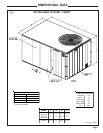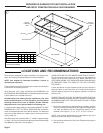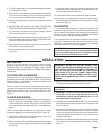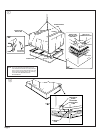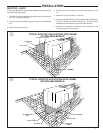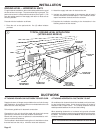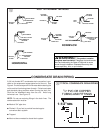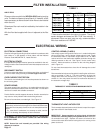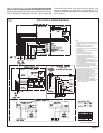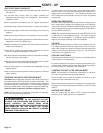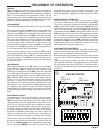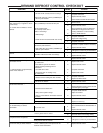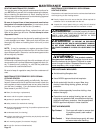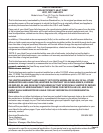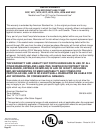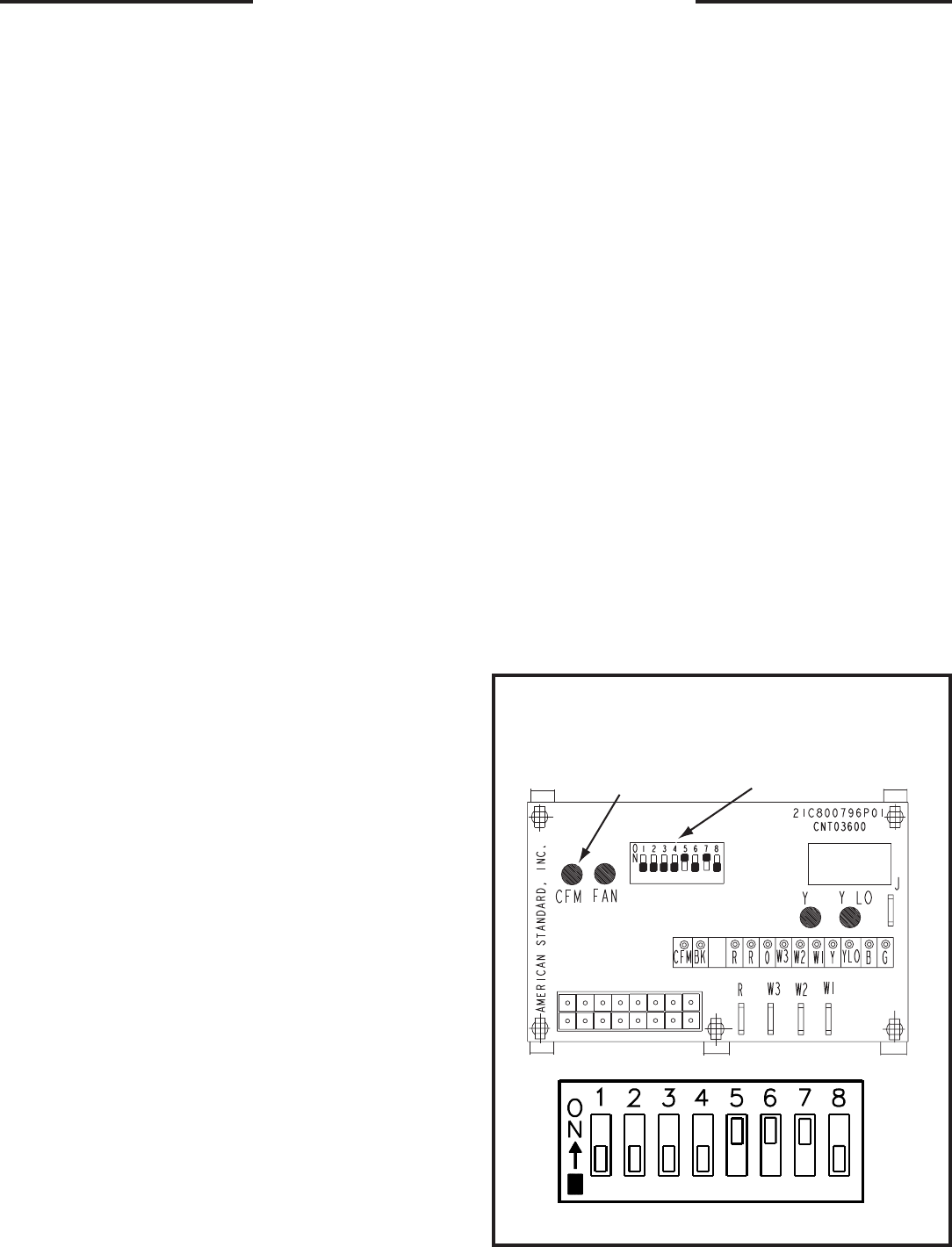
Page 15
SEQUENCE OF OPERATION
GENERAL
Operation of the unit heating and cooling cycles is automatic for
HEAT and COOL functions. (The optional automatic changeover
thermostat, when in the AUTO position, automatically changes to
heat or cool with sufficient room temperature change.) The fan
switch can be placed in either the ON position, causing continuous
evaporator (indoor) fan operation, or the AUTO position causing fan
operation to coincide with heating or cooling run cycles.
COOLING MODE
(NOTE: TSH & TSC are contacts internal to the indoor thermostat.)
With the disconnect switch in the ON position, current is supplied to
the compressor crankcase heater and control transformer. (The
outdoor fan relay (ODF) relay is energized through normally closed
contacts on the defrost timer control (DFC) on the 460V and 600V
units only.) The cooling cycle is enabled through the low voltage
side of the control transformer to the “R” terminal on the indoor
thermostat. With the system switch in the AUTO position and TSC-
1 contacts closed, power is supplied to the “O” terminal on the
indoor thermostat to the switchover valve coil (SOV). This energizes
the switch-over valve (SOV) and places it in the cooling position (it
is in the heating position when de-energized).
When the indoor temperature rises 1-1/2 degrees, TSC-2 contacts
close, supplying power to the “Y” terminal on the indoor thermostat,
and to the compressor contactor (CC). This starts the outdoor fan
motor and compressor. The TSC-2 contacts also provide power to
the “G” terminal which provides power to the fan relay (F) starting
the indoor fan motor.
HEATING MODE
With the disconnect switch in the “ON” position, current is supplied
to the compressor crankcase heater and control transformer. (The
outdoor fan relay (ODF) is energized through normally closed
contacts on the defrost timer control (DFC) on the 460V and 600V
units.) Starting at the “R” terminal on the indoor thermostat, current
goes through the system switch (which is in “AUTO” position) to the
TSH-1 contacts. When closed, these contacts supply power to
terminal ”Y” on the indoor thermostat as well as to the heating
anticipator. The switch-over valve will not energize because of the
high resistance of the heating anticipator in the thermostat. Power
is provided from “Y” to the compressor contactor (CC) which starts
the compressor and outdoor fan motor. The indoor thermostat
contact TSH-1 also provides power to “G” terminal on the indoor
thermostat energizing the fan relay (F), which starts the indoor fan
motor.
SUPPLEMENTARY HEAT
The supplementary electric heat is brought on when the indoor
temperature drops 1-1/2 degrees below the thermostat setting.
TSH-2 contacts close providing power to the “W” terminal on the
indoor thermostat and to the supplementary heater control circuit.
NOTE: The fan relay (F) must have been energized. An outdoor
thermostat may have been added to disallow the second stage (if
provided) of electric heat above a selected outdoor temperature. If
the outdoor temperature falls below the setting on the outdoor
thermostat, this additional heater stage will come on. When the
outdoor air temperature rises, and the outdoor T-stat setpoint is
reached, the system will revert back to first stage electric heating.
When the indoor ambient is satisfied, TSH-2 contacts will open and
the unit will revert back to the compressor only heating mode and
then off. For emergency heat (use of supplementary electric heat
only), an emergency (EMERG) heat switch is provided within the
thermostat. When placed in the emergency heat position, it will
disable the compressor, bypass the outdoor thermostats, if pro-
vided, and engage the supplementary electric heaters and indoor
fan.
DEMAND DEFROST OPERATION
During the heating cycle, the outdoor coil may require a defrost
cycle which is determined by the demand defrost control (DFC).
This control continuously measures the outdoor coil temperature
(CBS) and the outdoor ambient temperature (ODS-B) and calcu-
lates the difference or delta-T measurement. When the calculated
delta-T is met, the demand defrost control (DFC) opens the circuit
to the outdoor fan motor (ODM) and energizes the switch-over valve
(SOV), placing the unit in the cooling mode to defrost the outdoor
coil. The outdoor coil temperature sensor (CBS) terminates the
defrost cycle, or times off after twelve minutes in defrost, the (DFC)
energizes the outdoor fan motor (ODM) and twelve seconds later
de-energizes the (SOV), which returns the unit to the heating mode.
Supplementary electric heat, if provided, is brought on to control
indoor temperature during the defrost cycle.
ICM FAN MOTOR ADJUSTMENTS
If the airflow needs to be increased or decreased, see the Airflow
Table in the Service Facts. Information on changing the speed of the
blower motor is in the Blower Performance Table.
Blower speed changes are made on the ICM Fan Control mounted
in the control box. The ICM Fan Control controls the variable speed
motor.
There is a bank of 8 dip switches, (See Figure 15), located at the
upper right side of the board. The dip switches work in pairs to match
the cooling/heat pump airflow (CFM/TON), Fan off-delay options,
and electric heat airflow adjustment. The switches appear as shown
in Figure 15.
t
DIP SWITCHES (TYPICAL SETTINGS)
ICM FAN CONTROL
CFM
SELECTION
LIGHT
DIP
SWITCHES



